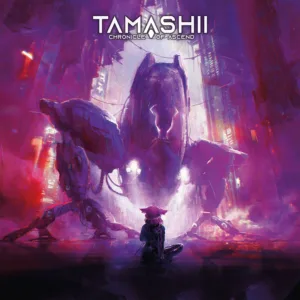 If you’ll recall back to my review of the skirmish game Cyberpunk Red: Combat Zone, I lamented on the void of good Cyberpunk board games available for our tabletops. However, recently we’ve seen an uptick in the offerings in this genre, perhaps due to the success of the Cyberpunk 2077 video game. Who can say, but what I do know is that game publisher Awaken Realms has thrown their hat into the ring with their new cyberpunk-themed game, Tamashii: Chronicles of Ascend. It’s a cooperative bag-building and pattern-matching game for 1-4 players that takes about 60-180 minutes to play.
If you’ll recall back to my review of the skirmish game Cyberpunk Red: Combat Zone, I lamented on the void of good Cyberpunk board games available for our tabletops. However, recently we’ve seen an uptick in the offerings in this genre, perhaps due to the success of the Cyberpunk 2077 video game. Who can say, but what I do know is that game publisher Awaken Realms has thrown their hat into the ring with their new cyberpunk-themed game, Tamashii: Chronicles of Ascend. It’s a cooperative bag-building and pattern-matching game for 1-4 players that takes about 60-180 minutes to play.
Gameplay Overview:
The gameplay in Tamashii is scenario-driven, with each mission being loosely connected to the overall plot. What is the plot? Well, it’s a mix of the themes of The Matrix, Altered Carbon, and The Terminator. Basically, in this post-apocalyptic future, a sentient AI has taken over the world and you are part of a band of resistance fighters who can jump in and out of bodies throughout the net.
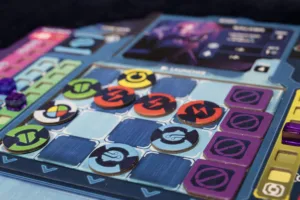
Each mission is opened with a small booklet that has the story and setup and then continues through a series of cards with branching paths (something I was a big fan of).
The basic round structure takes place over 4 phases:
First is the Planning phase, where you can upgrade your character, refill your launcher, and program patterns. Your launcher is a grid on your dashboard with a bunch of tokens (in 4 colors). Programming lets you slide/swap them around to try and create patterns (IE: 3 blues in a row, or Red, Yellow, Red).
Once everyone has finished that phase, it’s on to the Move and Trace phase. In this step, you move your character around the city, potentially exploring new districts. Whichever tile you end up on allows you to use its district power. Yet it will also increase your trace track, potentially spawning enemies on you during the next round’s Trace Roll step. After using any district abilities, you can then execute any programs in your launcher. So those three green tokens you lined up in the previous phase, you can send them to your dump to gain a shield asset. Or you can use that red/green/red pattern to activate a hack on the enemy attached to you, dealing it immediate damage.
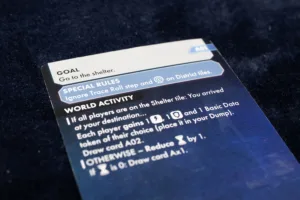
After each player has taken this step, you move on to the Combat phase. Here you roll dice to attack enemies attached to you. Combat is simple, you roll dice equal to your attack value and use the symbols you have. Most of the time you are doing damage to the enemy, and they are back at you. You can prevent damage with your shield assets and abilities, while most enemies will simply take damage until they are destroyed.
The round ends with a World phase where the time track will tick down, and other scenario-dependent things may happen. There is a lot more to Tamashii, but that’s the basic round structure. The scenario ends either with a loss when you run out of corrupted data tokens (gained when you die), or when you achieve the goals of the scenario and win.
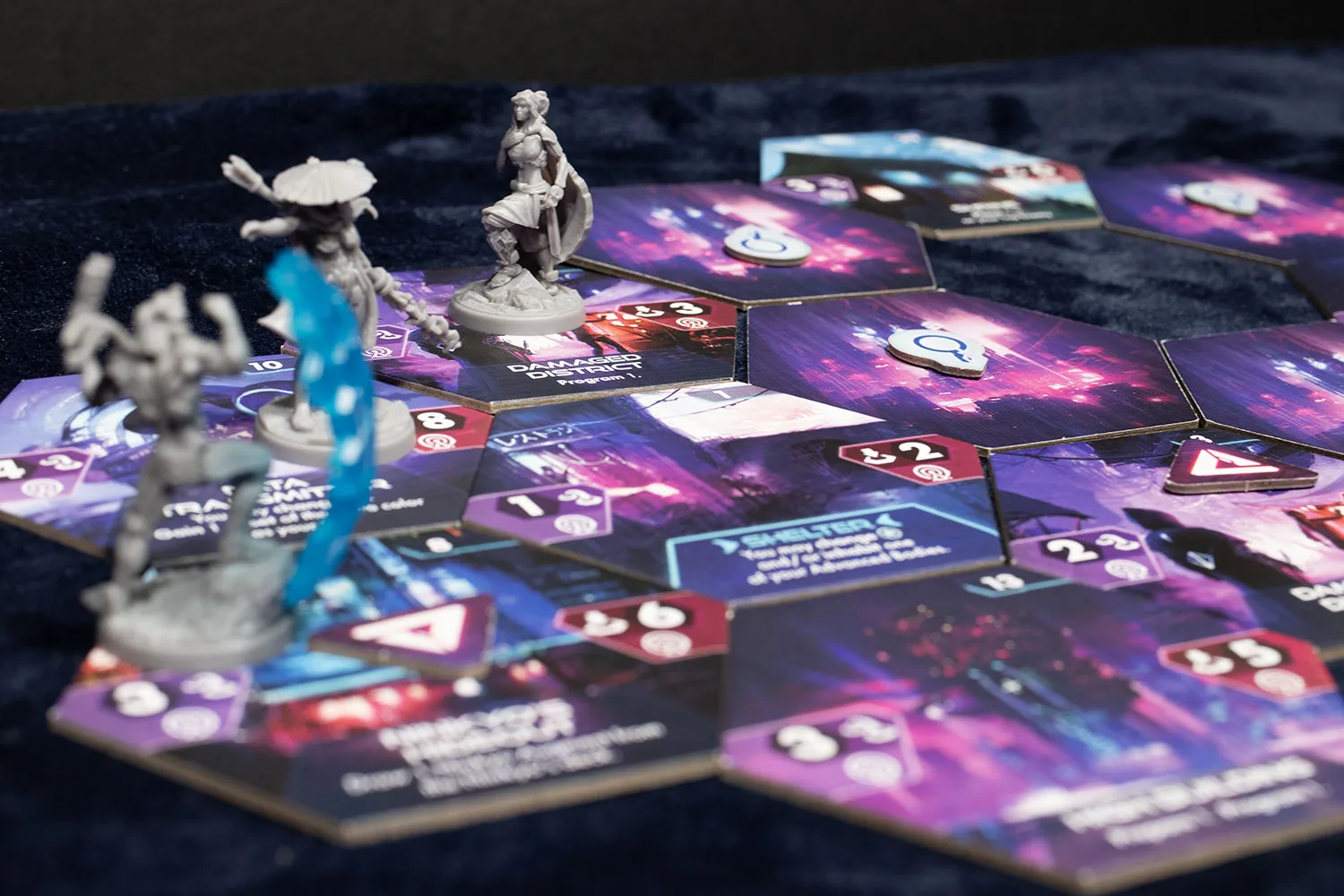
Gameplay Overview:
Move over Thunder Road Vendetta, I’ve got a new #1. Back in December last year, Brandon and I published our Top 10 Board Games of 2023 list. At the time, Tamashii came in at #5 for me, and one of the caveats I had on that entry was that it may slide up after more plays. I had only gotten the game in December, so it was too early to really tell at that point just how much I was going to like it. Well, the results are in and Tamaishii is absolutely fantastic. If I doing that list today, it would easily be my favorite board game for 2023. In fact, I probably would have posted this review sooner, but I just wanted to keep playing it (and clearly used this as an excuse to do so). After over a dozen games, I’m still loving it.
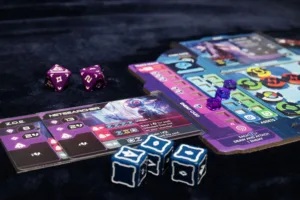
Tamashii has been a refreshing mixup of new ideas and tried and true mechanics. The pattern matching feature reminds me a lot of Bullet (which I also really enjoy), but added on to that is a game of exploration and combat. Each scenario is made up of specific district tiles and also random ones. That gives a sense of exploration as you move around the city, flipping tiles over to see what lies underneath. Even before you add in the expansions (which Awake Realms set for me to try out), there are dozens of different locations to discover.
And speaking of discover, I love the campaign system, or lack thereof. Instead of a standard campaign where you play with the same characters each time, Tamishii is a scenario-based game. The only rule is that you can’t do the final mission until after you’ve done every other scenario. But you are free to do those missions in any order. And the cool thing is that each mission will unlock new cards for you. These may be additional skill cards for the classes (4 classes in the core), new enemies to face, or new bodies to inhabit.
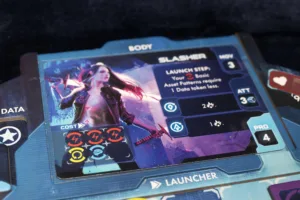
The body mechanic might be one of my favorites in the game. There is a body market during the game, and you can launch its pattern to inhabit that body. Everybody has their own attack and program values, along with unique special abilities. So that means that your Reaper (one of the core classes) character may inhabit the body of an assassin, or maybe of an expert programmer. Add on to that the faction augments you can find exploring the city and in every game your character has tons and tons of build options. This gives the games a LOT of replay value. Not only will you want to try each class out, but different bodies and augments as well.
Honestly, I could keep gushing on Tamashii for a while, but at the risk of blowing through my word count, I should probably get to the negatives. And to be honest, they are minimal. My biggest gripe is that the rulebook isn’t great. It’s not the easiest to learn the game from, and sometimes important rules are buried into paragraphs of text, making them too easy to miss. There are also some confusing concepts that aren’t really explained well. There has already been an official faq/errata released. But once you learn the game, the rulebook works fine as a reference, it even has an index thankfully.
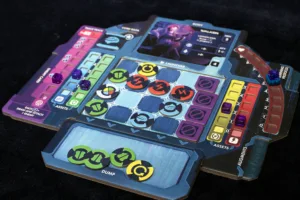
All put together, I think Tamashii has a really fun gameplay loop. It’s broken up into 4 phases, half of which are simultaneous, the other two turn-based. This helps to keep downtime to a minimum as even the turn-based phases are pretty quick. But between setting up your patterns, launching them to either build up your stats / weaken enemies, and upgrading your characters, there is so much to do in the game. Even when the game runs long (some have gone 2-3 hours), it never felt like it dragged.
And to touch on the expansions really quickly, I was able to try out the Lost Pages and Forbidden Chapter expansions. I’d definitely recommend picking these up if you like the game as they add even more variety—new missions, new mechanics, and other rules, all of which were very easy to incorporate. Definitely give those a look if you end up liking the game. The only one you could probably pass on would be the Edgerunners expansion, which replaces the standees for minis. Unless you are a diehard minis fan, or like to paint, the standees work well enough in this game for the minimal use they get.
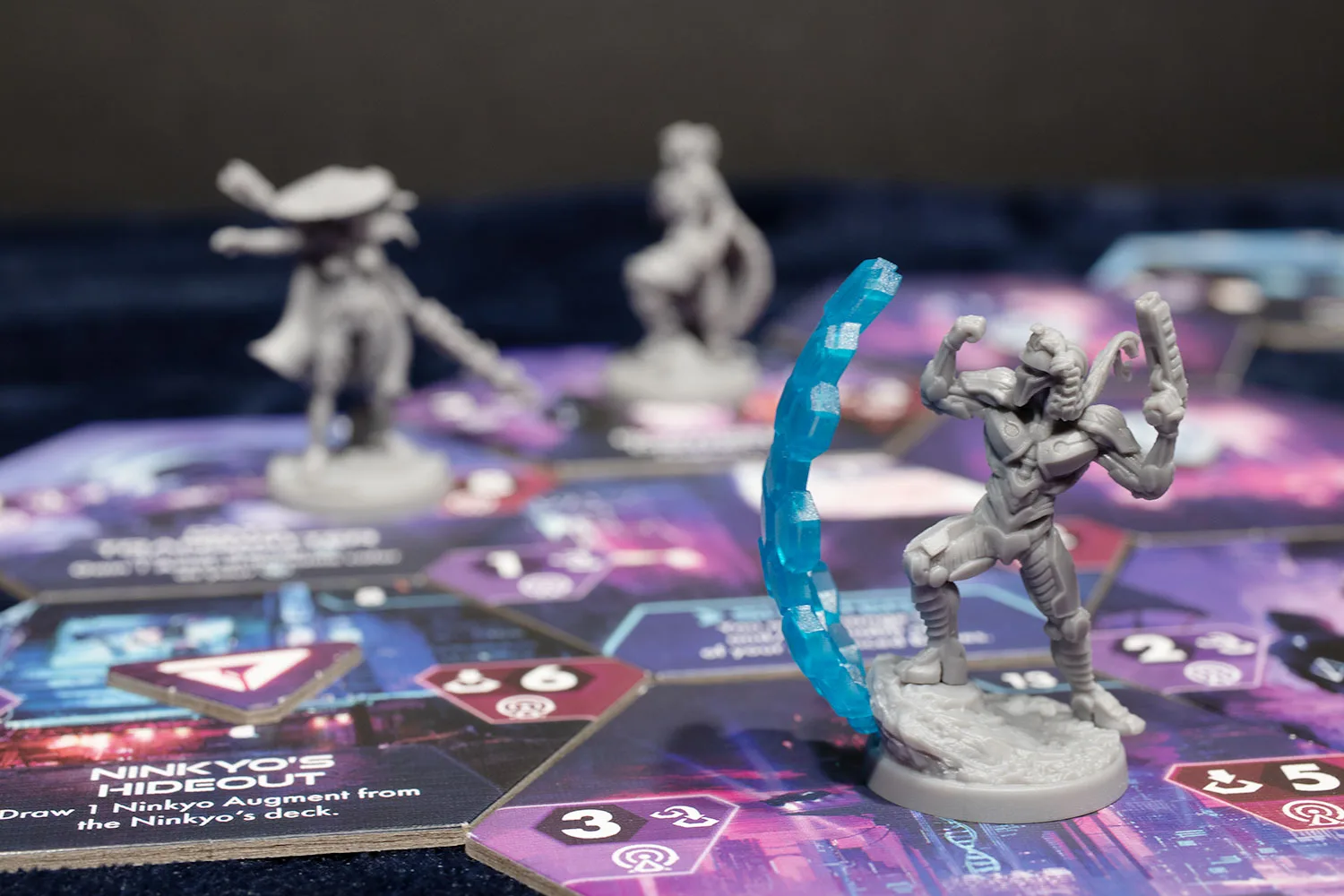
Final Thoughts:
Tamashii: Chronicles of Ascend is a fantastic cyberpunk game that uses its theme really well. From the gameplay to the art to the story, the theme never felt pasted on. I love fighting the AI robots, jumping in and out of different bodies, and the branching scenario decision points that unlock different things. Outside of the subpar rulebook, I really don’t have a lot to complain about with the game. It’s definitely my favorite game from last year, and one I will continue to play well after this review is done. If the theme at all interests you, then I’d highly recommend picking this one up.
Final Score: 5 Stars – An excellent cyberpunk-themed game with a fun story and tons of replay value.
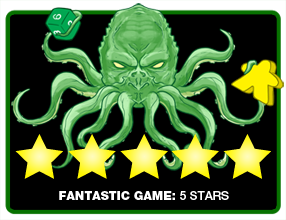 Hits:
Hits:
• Great gameplay mechanics
• Love the scenario and unlock system
• Tons of replay value
• Expansions are easily added and provide even more variety
• The body system helps make each character feel different
Misses:
• Rulebook could be better
Source: Board Game Quest



